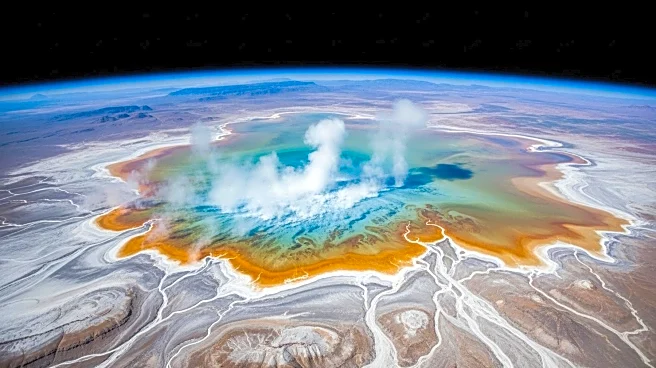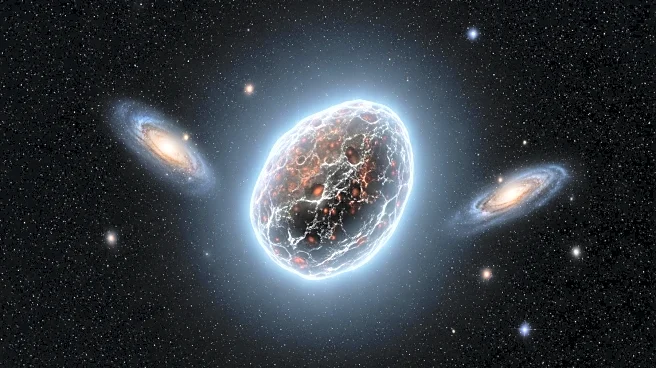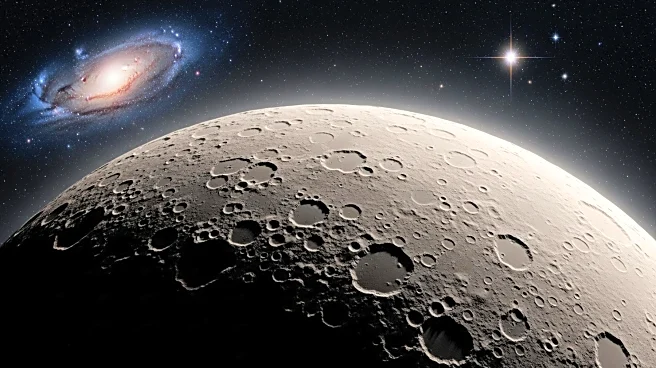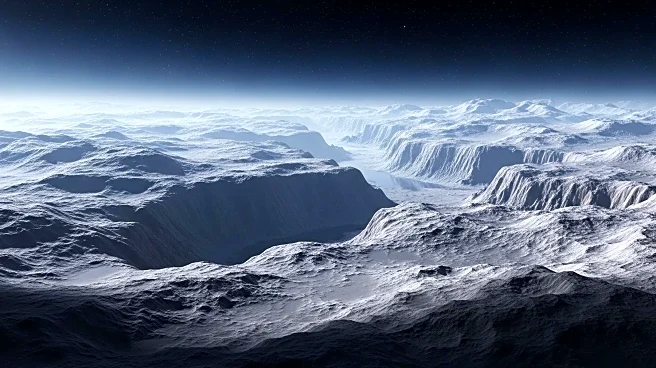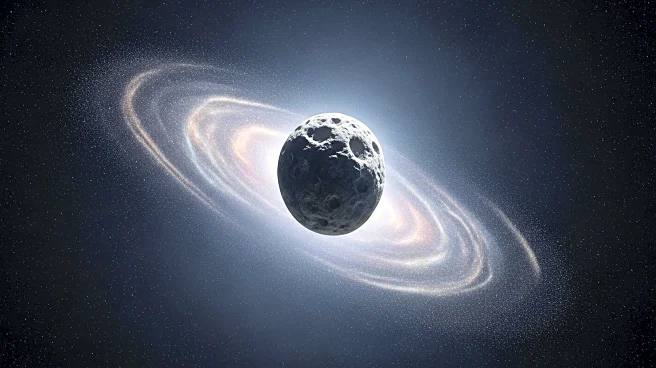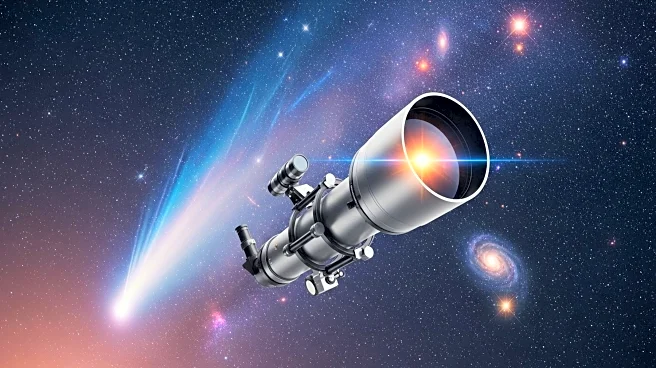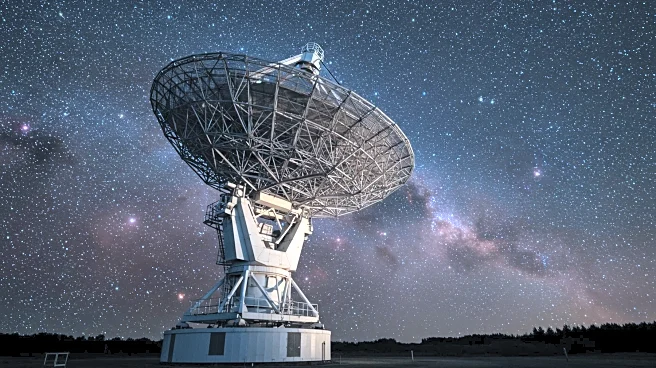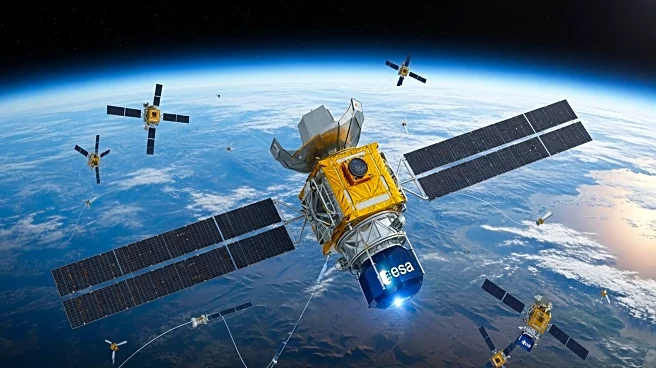What is the story about?
What's Happening?
NASA astronaut Kate Rubins captured a stunning image of Lake Van in Turkey, showcasing rare milky swirls known as 'turbidity plumes.' These plumes consist mostly of calcium carbonate and are triggered by disturbances to the lake floor. Lake Van, the largest soda lake on Earth, is highly alkaline with a pH of around 10. The lake's high salt concentration prevents it from freezing, even in winter. The image highlights the unique geological and chemical characteristics of Lake Van, which has fluctuated significantly in depth over the past 600,000 years due to climate changes.
Why It's Important?
The image of Lake Van provides valuable insights into the geological and chemical processes occurring in soda lakes, which are rare and unique ecosystems. Understanding these processes can contribute to broader environmental studies, including climate change impacts and the role of microbial communities in mineral precipitation. The high alkalinity and salt concentration of Lake Van make it a significant site for studying extremophile organisms, which could have implications for astrobiology and the search for life on other planets.
Beyond the Headlines
Lake Van's unique conditions offer a natural laboratory for studying microbialite formations, which are important for understanding early life on Earth. The lake's fluctuating water levels over millennia provide a historical record of climate change, offering insights into past environmental conditions. The study of soda lakes like Lake Van can also inform conservation efforts, as these ecosystems are sensitive to human activities and climate variations.
AI Generated Content
Do you find this article useful?
